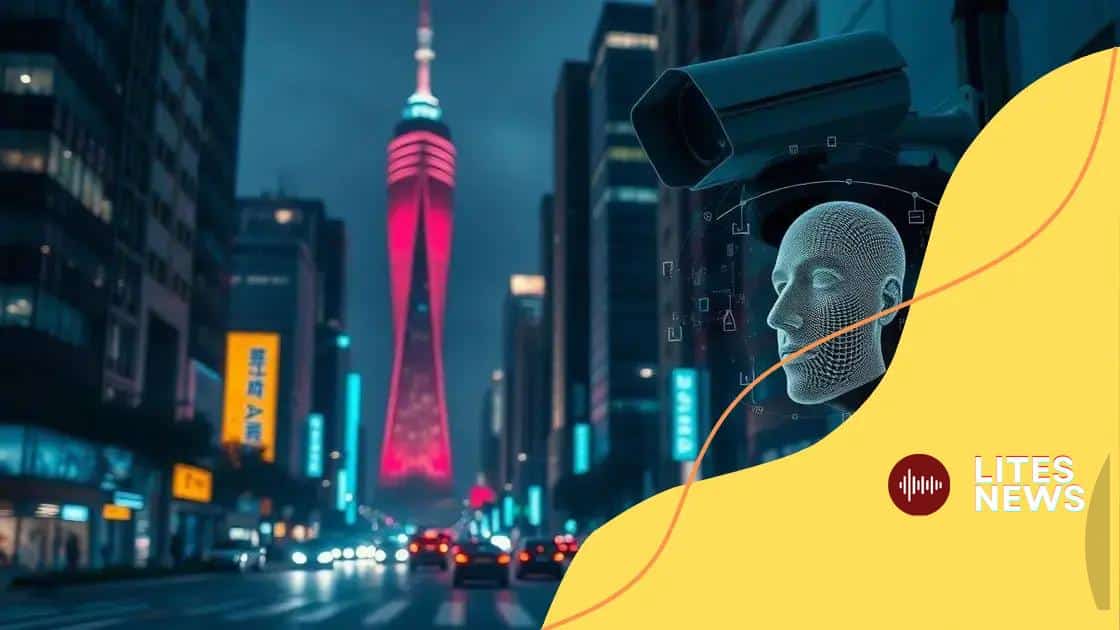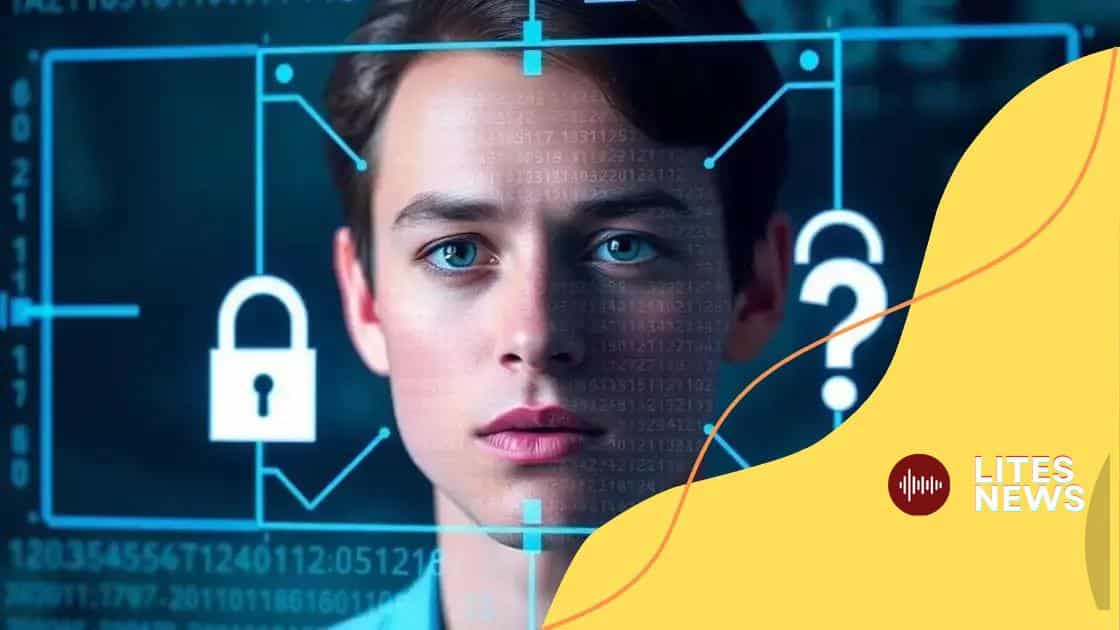The role of facial recognition in enhancing public safety

The role of facial recognition in enhancing public safety lies in its ability to identify individuals quickly, improve emergency response times, and deter crime, all while raising important ethical and privacy concerns.
The role of facial recognition in enhancing public safety has become increasingly significant in today’s surveillance landscape. Have you ever wondered how technology shapes our security measures and everyday life?
Understanding facial recognition technology
Understanding facial recognition technology is essential in today’s security landscape. This technology captures and analyzes facial features from images or video feeds. It is used widely in various sectors, enhancing security measures effectively.
There are many facets to facial recognition, starting with how it works. The technology employs algorithms to detect patterns in facial features. These algorithms can transform images into a digital representation for comparison. Facial recognition systems require a suitable database to match faces correctly. This process involves several steps for high accuracy.
Key Components of Facial Recognition
Understanding the components that make up this technology can provide valuable insights:
- Face detection: Identifying a face within an image.
- Feature extraction: Analyzing key facial landmarks.
- Face matching: Comparing the analyzed features against a database.
- Recognition output: Delivering the identity or feedback based on matches.
As technology advances, so does its complexity and application. Newer systems not only recognize faces but also analyze emotions and behaviors. This can drastically change how we view security measures today. Are we prepared for the potential these advancements offer?
Privacy concerns often arise with these technologies. While facial recognition enhances security, it raises important questions about personal privacy. Balancing safety and ethics is vital in the discussion surrounding the widespread use of facial recognition technology.
Benefits of facial recognition for public safety
Facial recognition technology is becoming vital for enhancing public safety. Many organizations are discovering its numerous advantages, leading to safer communities.
One major benefit is the ability to identify individuals quickly in crowded spaces. This speed can help law enforcement agencies respond to incidents effectively. The technology assists in real-time monitoring, allowing for immediate action against suspicious activities.
Key Advantages of Facial Recognition
Understanding the key advantages can shed light on its role in public safety:
- Crime prevention: Deters potential criminals knowing that surveillance is in place.
- Missing persons: Helps locate and identify missing individuals through databases.
- Access control: Improves security measures in restricted areas, ensuring only authorized personnel gain entry.
- Data collection: Provides valuable data for improving safety strategies and policies.
Additionally, this technology assists in reducing response times during emergencies. By analyzing footage, authorities can assess situations more comprehensively. Enhanced situational awareness can lead to better decision-making during critical moments.
Facial recognition also aids in creating safer public spaces. When integrated into smart city initiatives, it complements other technologies, like IoT devices, to provide a holistic safety solution. As communities become more interconnected, safety measures can be more effective and responsive.
Ethical considerations and privacy issues

When discussing the impact of facial recognition technology, it is crucial to address the ethical considerations and privacy issues that arise. As this technology becomes more prevalent, many people are concerned about how their data is used and stored.
One major ethical issue is the potential for misuse of this technology by authorities. There is a fear that facial recognition could lead to unwarranted surveillance, targeting individuals without just cause. This raises questions about the balance between security and personal privacy.
Concerns Surrounding Facial Recognition
Several key concerns highlight the ethical implications:
- Informed consent: Do individuals understand when and how their facial data is being collected?
- Data security: How well protected is the data once it is collected?
- Bias and discrimination: Are facial recognition systems equally accurate for all demographics?
- Accountability: Who is responsible if the technology is misused or produces incorrect results?
Many studies have shown that facial recognition systems can have biases, often producing false positives for people from minority backgrounds. This can lead to wrongful targeting and further exacerbate social inequalities. Addressing these issues is essential to prevent misuse and promote fairness.
Another concern involves the long-term implications of surveillance. The constant monitoring enabled by facial recognition may lead to a society where people feel they are always being watched. This could stifle free expression and create a culture of fear.
Case studies of successful implementations
Numerous case studies of successful implementations show the effectiveness of facial recognition technology in enhancing public safety. These examples highlight how various organizations have adopted this technology to achieve significant results.
One prominent case is in law enforcement. In several major cities, police departments have integrated facial recognition solutions to assist in solving crimes. These systems have helped identify suspects quickly, leading to faster arrests. The technology has proven to be particularly effective in crowd control during large events or protests.
Notable Examples
Here are some notable instances of successful facial recognition applications:
- The New York City Police Department: They utilize facial recognition to analyze surveillance footage in real time, improving response times to incidents.
- London’s Metropolitan Police: This agency deployed facial recognition at public events, significantly reducing crime rates through proactive monitoring.
- Airports: Many airports now use facial recognition technology for security checks and boarding processes, enhancing travel efficiency and safety.
- Retail security: Some stores employ facial recognition to prevent shoplifting and improve customer service by identifying frequent shoppers.
Another successful implementation can be seen in the private sector. Companies have developed applications that leverage facial recognition for secure access to facilities. This adds an extra layer of security, ensuring that only authorized personnel can enter sensitive areas.
Facial recognition technology has also been pivotal during emergency situations. In cases of missing persons, rapid identification through facial recognition databases has aided in reunifications. These real-world examples showcase how effective facial recognition can be when used responsibly and ethically.
Future trends in facial recognition usage
The future trends in facial recognition usage promise to reshape how we approach security and personal interactions. As technology continues to advance, new applications and improvements emerge, focusing on efficiency and privacy.
One significant trend is the shift towards more accurate recognition systems. Researchers are focused on reducing biases in algorithms, aiming for equal effectiveness across all demographics. This is crucial to ensure that the technology serves everyone fairly.
Emerging Innovations
Here are some innovations that are expected to influence the future of facial recognition:
- Integration with AI: Facial recognition combined with artificial intelligence can enhance decision-making processes and improve accuracy.
- Mobile applications: More smartphone apps will incorporate facial recognition for secure logins, making technology more accessible to everyday users.
- Smart city projects: Cities are incorporating facial recognition into public safety initiatives, creating safer urban environments by rapidly identifying threats.
- Privacy-enhancing technologies: Developers are creating systems that minimize data collection while maximizing security capabilities.
Another trend is the increased focus on regulations governing the use of facial recognition technology. As public concerns about privacy grow, governments worldwide are considering laws to protect individuals. This regulatory landscape will significantly shape how businesses implement these technologies.
In addition, the use of facial recognition in customer service is on the rise. Retailers are exploring ways to enhance the shopping experience through personalized services. For example, recognizing a returning customer allows staff to provide tailored suggestions, improving customer satisfaction.
FAQ – Frequently Asked Questions About Facial Recognition Technology.
What are the main benefits of facial recognition technology for public safety?
Facial recognition technology enhances public safety by enabling quick identification of individuals, improving response times, and preventing crime.
What ethical concerns are associated with using facial recognition?
The main ethical concerns include privacy issues, potential misuse for surveillance, and bias in recognition systems leading to discrimination.
How is facial recognition technology evolving for future use?
Future trends include improved accuracy through AI integration, expanded applications in various sectors, and a focus on regulatory measures to protect privacy.
Can facial recognition help in identifying missing persons?
Yes, facial recognition technology is useful in locating missing individuals by comparing faces against databases in real-time.





